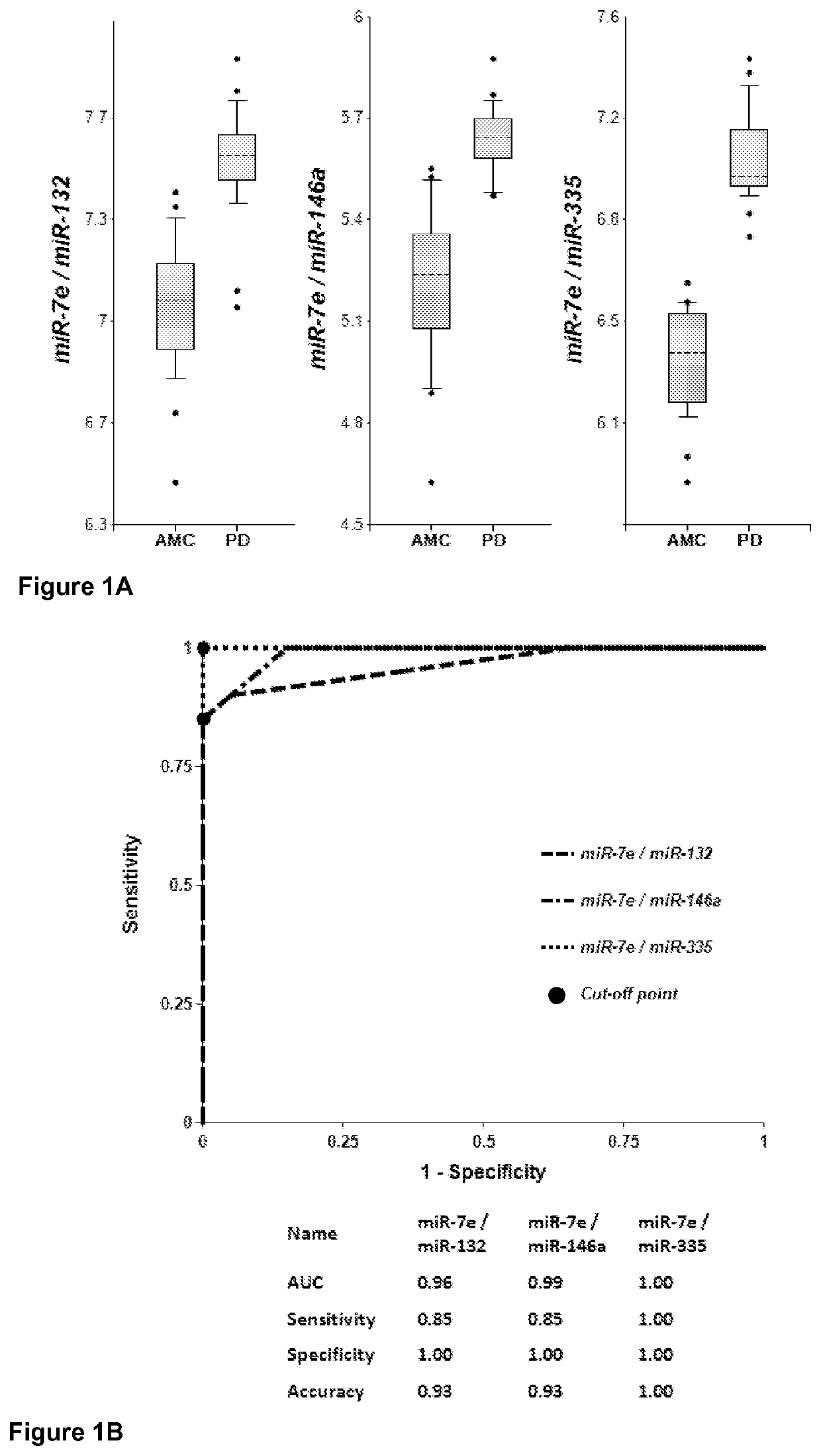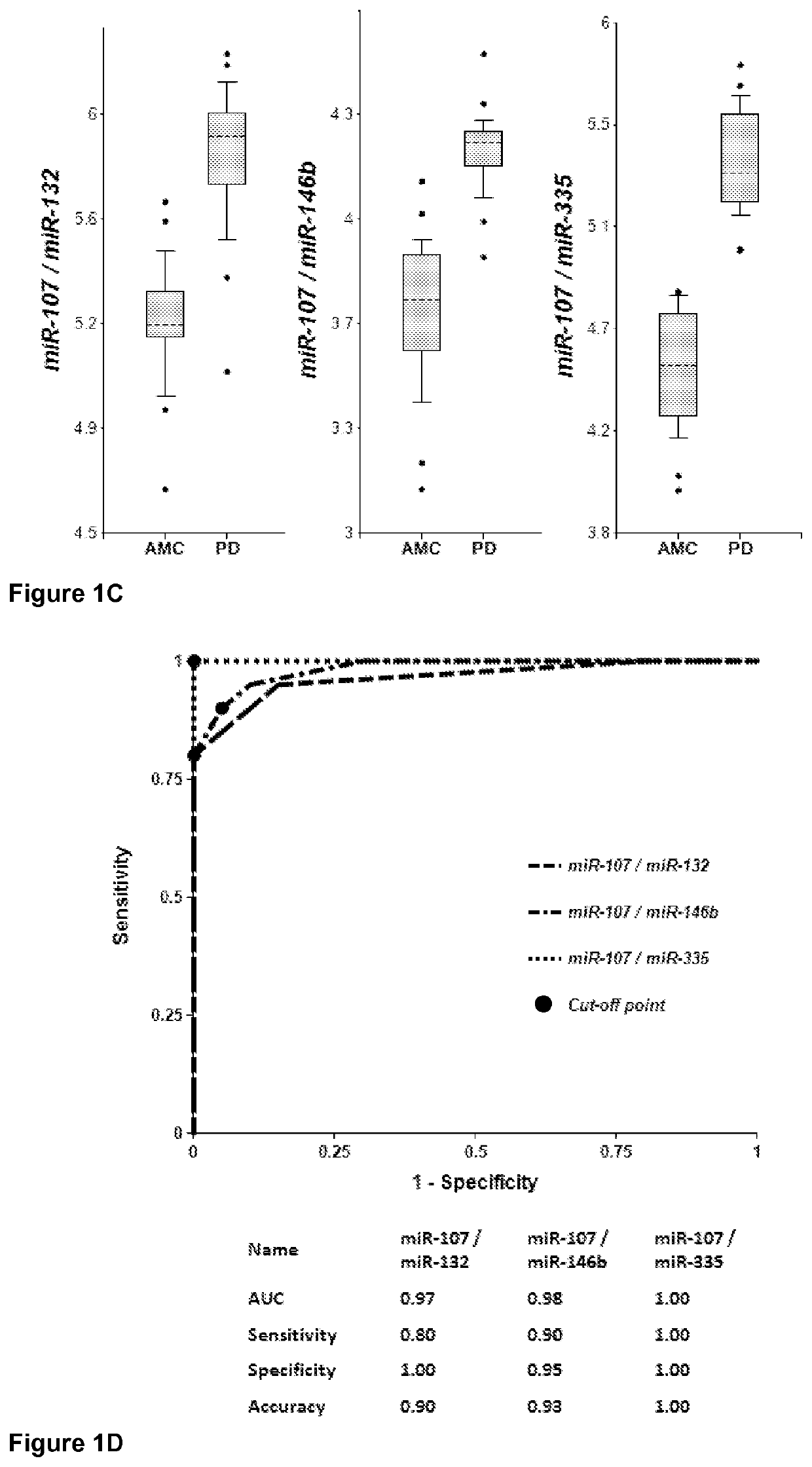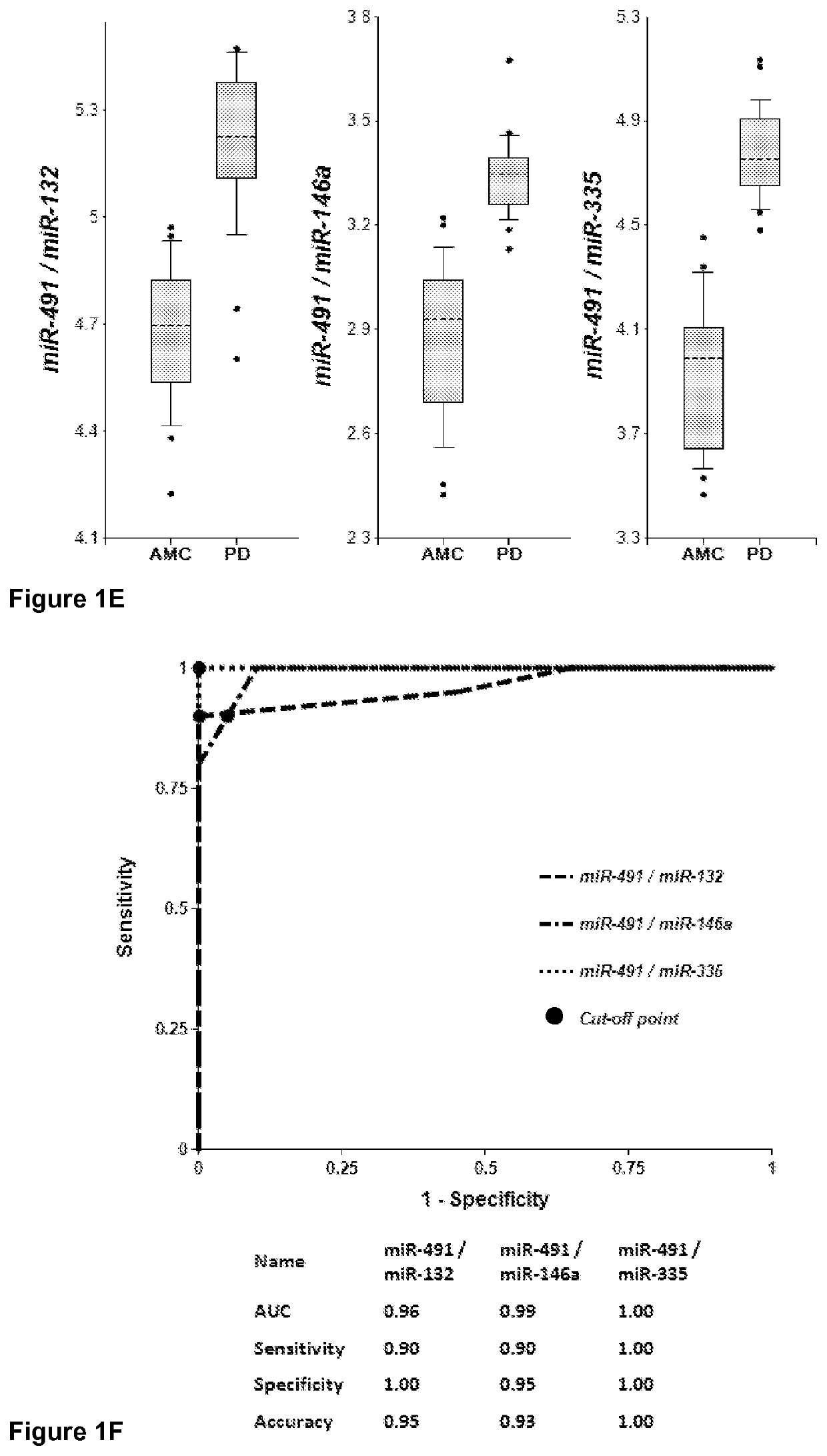Methods of using miRNAs from bodily fluids for detection and monitoring of Parkinson's disease (PD)
- Summary
- Abstract
- Description
- Claims
- Application Information
AI Technical Summary
Benefits of technology
Problems solved by technology
Method used
Image
Examples
example 1
Selection of miRNAs for Testing
[0230]The methods of the instant invention are based on the use of miRNAs enriched in different brain areas as numerators and denominators, which significantly improves test sensitivity and specificity. Table 1 below presents lists of brain-enriched miRNAs, miRNAs enriched in synapses, axons, dendrites and spines (“synapse and / or neurite miRNAs”) and miRNAs enriched in different brain areas.
[0231]
TABLE 1miRNAs enriched in brain, different brain areas and neuronal compartmentsBrain areas andcompartmentsEnriched miRNAsWhole brainLet-7a,c,e, 7, 9, 96, 98, 99a,b, 103, 105, 106a, 107, 124a, 125a, 125b, 127,128a, 129, 132, 134, 135a, 137, 138, 139, 149, 151, 153, 154, 181a, 181b,181c, 182, 183, 184, 190, 204, 211, 212, 213, 218, 219-3p, 219-5p, 221,222, 299-3p, 299-5p, 323-3p, 324-5p, 326, 328, 329, 330, 331, 335, 337,338-5p, 340, 342, 346, 369-3p, 369-5p, 370, 379, 381, 382, 383, 409-3p,410, 411, 423-5p, 425, 432, 433-5p, 485-3p, 485-3p,-5p, 487a,b, 488, 49...
example 2
Quantitative Analysis
[0235]Mann-Whitney U-test was used to evaluate significance of differentiation of any two patient groups by various biomarker miRNA pairs. Bonferroni correction was applied for estimating significant P-values. In all experiments (differentiation of PD from age-matched control [AMC], MCI and AD) 32 miRNAs were tested, thus P-value<0.0001 (calculated as 0.05 / 496; 496 here indicates the total number of miRNA pairs examined) was considered significant. A standard formula for a case-control study (Eng J. Radiology. 2003; 227:309-313) was applied for estimating the sample size required to produce statistical power 0.90.
example 3
Differentiation of PD Patients from Age-Matched Controls (AMC)
[0236]Plasma samples were obtained from 20 PD patients and 20 AMC (±2.5 years). Concentrations of brain-enriched miRNAs, inflammation-associated miRNAs, muscle-enriched miR-206 and several ubiquitous miRNAs in plasma were analyzed using RT-qPCR with primers and probes for each individual miRNA (Life Technologies). The amount of RNA equivalent to 25 μL of plasma were taken in each RT reaction, and the amount of miRNA (cDNA) equivalent to 2 μL plasma was taken into final PCR. The results obtained for each miRNA were normalized per potential normalizer miRNA, converted into Relative Concentration (RC) of miRNA according to the ABI protocol (2−ΔCt), and compared with miRNA profiles from age-matched controls (AMC). The biomarker pairs were selected as described above. Both approaches gave similar results. Correlation of plasma concentrations, P-values for differentiation of PD patients from AMC and AUC (Area under ROC curve) f...
PUM
| Property | Measurement | Unit |
|---|---|---|
| time | aaaaa | aaaaa |
| distance | aaaaa | aaaaa |
| distance | aaaaa | aaaaa |
Abstract
Description
Claims
Application Information
 Login to View More
Login to View More - R&D
- Intellectual Property
- Life Sciences
- Materials
- Tech Scout
- Unparalleled Data Quality
- Higher Quality Content
- 60% Fewer Hallucinations
Browse by: Latest US Patents, China's latest patents, Technical Efficacy Thesaurus, Application Domain, Technology Topic, Popular Technical Reports.
© 2025 PatSnap. All rights reserved.Legal|Privacy policy|Modern Slavery Act Transparency Statement|Sitemap|About US| Contact US: help@patsnap.com



